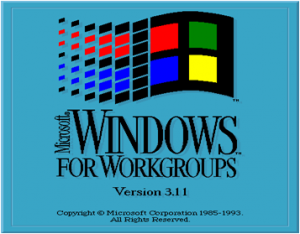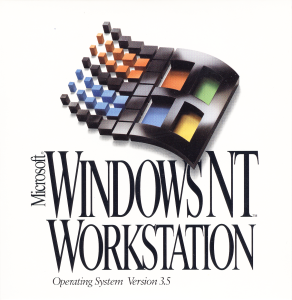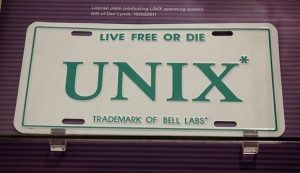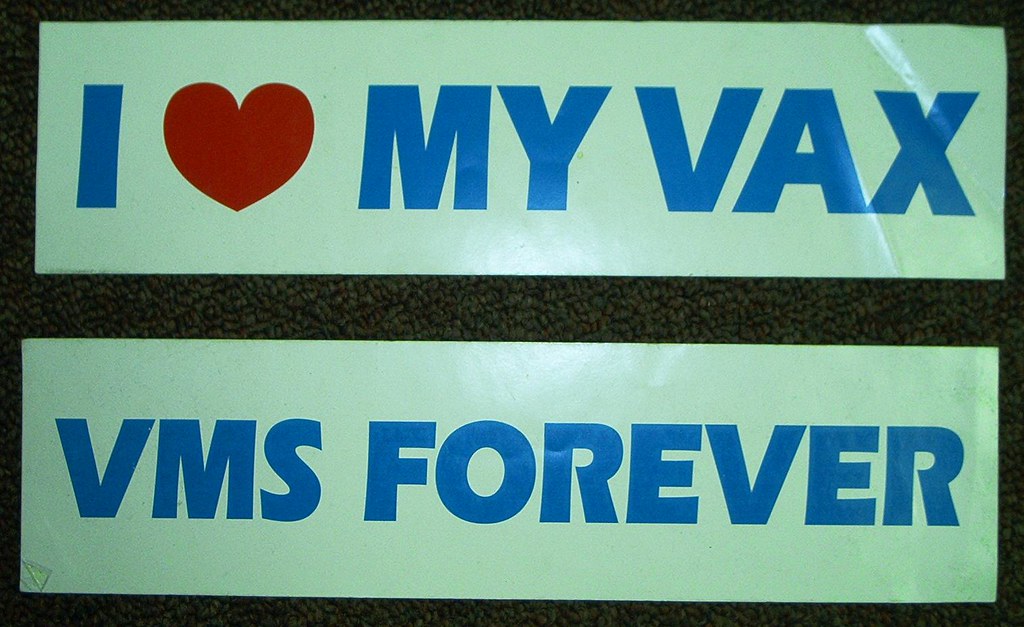We re-run the video on the Santa Bailout Hearings, so topical years ago, but the image never quite goes away.
Visits: 67
The unusual and strange from news and popular culture.
We re-run the video on the Santa Bailout Hearings, so topical years ago, but the image never quite goes away.
Visits: 67
A while ago, I wrote about writing functions in Maple, which made it possible to use function notation inside of the software. There is a simpler way to do it, taking only one step:
f:=x-> x2 - 3*x + 2
f(5)
12
And I can place this f(x) in a plot() command, and it will behave the same way as before.
Visits: 53
Yes, I know the context. Margaret said what she said in the grander context of negative politics, using her son as an example.
The CBC article online today grabbed my attention: “Attacks on Justin Trudeau ‘straight out bullying,’ says mom Margaret“. That, and the illustration just conveyed the worst possible image of a mother doting on her grown son, who needs to stand on his own as an independent politician.
It plays into the Conservative image of trying to dissuade voters from Trudeau because of his young age. The truth is that Harper was 43 when he took over the Reform-Alliance Party, and he was almost that age when he first became Prime Minister. That is the same age as Justin Trudeau is now. At any rate the interview was to promote her new book, The Time of Your Life, about growing old as a woman in Canada. But the last two minutes or so made the headline story.
Visits: 66
Almost four years ago, the articles in the USENET newsgroup misc.activism.progressive ground to a halt, and moderator Rich Winkel has all but disappeared from the USENET, whom I learn resided in Harrisburg (up until 2010, at least), a half hour or so drive from his former employer, the University of Missouri. He is now a computer systems analyst, and in his spare time, is a writer for the Thought Crime Radio blog.
misc.activism.progressive (MAP) was a moderated newsgroup which accepted submissions from authors of left-leaning articles. Opinions ranged from the mainstream NY Transfer News Collective (who often sent articles from, or based on news from Reuters, Wall Street Journal, the UK Independent and other feeds from the popular press) to the conspiracy theorists at InfoWars.
Some time between 2007 and 2008, one of the biggest contributors to MAP, NY Transfer News Collective, stopped posting articles, and its parent company, Blythe Systems seems to have folded, leaving no Internet trace of itself. The daily output of MAP was cut in half as a result.
Postings gradually died out until March 2011 when they died out completely. As far as I had been able to search out, there appeared to be no warning of this in previous years. Mind you, one would have to search through tens of thousands of posts going back to 2007 just before things started to peter out. By about 2010, name searches for “Rich Winkel” began to come up empty, but his email address was still around.
This newsgroup was always a great source of thought and news regarding labour, politics, and “alternative voices” (as long as you stay away from Infowars). It was always weak on health and science coverage. Medicare was well-covered (because that was more about government, and they were always better at that), but articles along the lines of “chemical xyz can kill you” were usually flaky and withered once you did your own research.
To take a very recent example, Rich Winkel attached his name to this article, written a few days ago, which claims zero deaths from measles since 2003, but 108 deaths due to vaccines during the same period. The first quote he offers for the zero figure was by CDC’s Dr. Anne Schuchat, filtered though Associated Press, filtered through Fox News, filtered though the blog Vaccine Impact. The VAERS database he refers to says in its disclaimer that any statistics mentioned should not be taken as cause-and-effect. Anyone with high school math can tell you that correlation does not imply causation. VAERS says that they take in all reported data such as mortality after the injection of a vaccine whether or not the death was associated with a vaccine. The deaths, in other words were recorded in the database even if there were pre-existing conditions, accidents, or whatnot.
But of course, zero is a powerful number. I mean, zero. Zero! How can you argue with zero? Well, in fact you can. Going back to the CDC’s epidemiological data, there are deaths on any year between 2003 and now caused by Measles in the United States. It’s just that the number of measles outbreaks themselves is so low in the United States that it would not surprise me that the numbers would be extremely low (during 2003-2012 between 1 and 4). If I were the CDC chairman, I would round those number to zero, too.
And that would be one death for every dozen or so cases – some years, that a dozen cases would be all of the measles cases in a country of nearly 300 million inhabitants. On the other hand, the 108 figure is quoted without saying how many Americans were vaccinated during the past 12 years. Once I do the research from the source (rather than from quotes of quotes), I seem to get a picture of a successful immunization program, and the 108 deaths (out of the hundreds of millions of vaccinated Americans) could have been due to anything. One death out of a dozen for measles is a larger number than 100 deaths out of 300 million for vaccinations, by several orders of magnitude.
Death is one of the end products of measles, by the way. The CDC reports that, worldwide, 168,000 people died as a result of measles in 2008 alone. That number is pretty sobering. This is a significant decrease from over 700,000 deaths in 2000. The CDC says that all of these numbers are low, since measles tends to be under-reported. But the 78% decrease, no doubt happened due to a successful immunization program. The CDC says the worldwide numbers cannot go down to zero, since there are counrties such as India, which are slow to apply the recommendations of the WHO, or cannot afford to.
The Florida cases reported by the CDC back in September, 2014 consisted of four child siblings, all between the ages of 7 and 13, none of whom were vaccinated. Measles is transmitted through the air by affected people coughing or sneezing. Did it spread? No, it didn’t. Why? The children in the school they attended, as well as the staff, were immunized, according to the same article. The children attended an amusement park where it was likely someone with measles was there from another country (this is usually the main disease vector in the United States for catching measles in any given year).
The family of those children claimed a religious exemption from vaccinations, and for some time the children recieved a free ride from needing to be immunized thanks to being around their immunized classmates (this is called herd immunity), but that was no protection once they came close to anyone with the actual disease.
Questioning whether the vaccine “works” is a distracting issue (actually, a non-issue since whether the measles vaccine works is beyond debate by any informed person including the CDC and the WHO), and a confusing, obfuscatory barrage of decontextualized factoids from this-and-that source does not advance any useful discussion.
The issue here isn’t about a non-working vaccine or about big bad pharma making money off immunizations (which they are, but in at least this one case, it is well-earned IMO), but Rich Winkel misses a greater philosophical question that can indeed cause much genuine and badly-needed debate:
The parents of these children deny their children the vaccination, making a claim to associated with their freedom of religion. Should the need to protect the population from disease override the indiviual’s freedom of religion for the good of the general population?
I would weigh in that surely, not immunizing your children places them in harm’s way, and you ought to be seen as a negligent parent if you chose this path, regardless of your beliefs; but at the same time, you are exposing others to disease by their lack of protection. The viruses don’t care about your rights, that’s for sure.
But hey, that’s just me. This is more of a topic which would play to Rich Winkel’s strengths, and it truly is a debate suppressed by the major media organs of our culture. I would leave the non-debate as to whether the Vaccine “works” to Fox News.
Visits: 154
 If Operating Systems Were Airlines is a popular article that predates the web, and was first seen in Usenet in the 1980s. Over time, it has undergone several revisions all over the internet. Here is a compilation as far as I can do. Most of this is sourced from webaugur.com. But there has been other OSes added from elsewhere. Illustrations and logos are from random places about the web.
If Operating Systems Were Airlines is a popular article that predates the web, and was first seen in Usenet in the 1980s. Over time, it has undergone several revisions all over the internet. Here is a compilation as far as I can do. Most of this is sourced from webaugur.com. But there has been other OSes added from elsewhere. Illustrations and logos are from random places about the web.
 Everybody pushes the airplane until it glides, then they jump on and let the plane coast until it hits the ground again, then they push again jump on again, and so on.
Everybody pushes the airplane until it glides, then they jump on and let the plane coast until it hits the ground again, then they push again jump on again, and so on.
 The terminal is almost empty, with only a few prospective passengers milling about. The announcer says that their flight has just departed, wishes them a good flight, though there are no planes on the runway. Airline personnel walk around, apologising profusely to customers in hushed voices, pointing from time to time to the sleek, powerful jets outside the terminal on the field. They tell each passenger how good the real flight will be on these new jets and how much safer it will be than Windows Airlines, but that they will have to wait a little longer for the technicians to finish the flight systems.
The terminal is almost empty, with only a few prospective passengers milling about. The announcer says that their flight has just departed, wishes them a good flight, though there are no planes on the runway. Airline personnel walk around, apologising profusely to customers in hushed voices, pointing from time to time to the sleek, powerful jets outside the terminal on the field. They tell each passenger how good the real flight will be on these new jets and how much safer it will be than Windows Airlines, but that they will have to wait a little longer for the technicians to finish the flight systems.
Once they finally finished you’re offered a flight at reduced cost. To board the plane, you have your ticket stamped ten different times by standing in ten different lines. Then you fill our a form showing where you want to sit and whether the plane should look and feel like an ocean liner, a passenger train or a bus. If you succeed in getting on the plane and the plane succeeds in taking off the ground, you have a wonderful trip…except for the time when the rudder and flaps get frozen in position, in which case you will just have time to say your prayers and get in crash position.
 The terminal is pretty and colorful, with friendly stewards, easy baggage check and boarding, and a smooth take-off. After about 10 minutes in the air, the plane explodes with no warning whatsoever.
The terminal is pretty and colorful, with friendly stewards, easy baggage check and boarding, and a smooth take-off. After about 10 minutes in the air, the plane explodes with no warning whatsoever.
 Just like Windows Air, but costs more, uses much bigger planes, and takes out all the other aircraft within a 40-mile radius when it explodes.
Just like Windows Air, but costs more, uses much bigger planes, and takes out all the other aircraft within a 40-mile radius when it explodes.
 All the stewards, stewardesses, captains, baggage handlers, and ticket agents look the same, act the same, and talk the same. Every time you ask questions about details, you are told you don’t need to know, don’t want to know, and would you please return to your seat and watch the movie.
All the stewards, stewardesses, captains, baggage handlers, and ticket agents look the same, act the same, and talk the same. Every time you ask questions about details, you are told you don’t need to know, don’t want to know, and would you please return to your seat and watch the movie.
 Each passenger brings a piece of the airplane and a box of tools to the airport. They gather on the tarmac, arguing constantly about what kind of plane they want to build and how to put it together. Eventually, they build several different aircraft, but give them all the same name. Some passengers actually reach their destinations. All passengers believe they got there.
Each passenger brings a piece of the airplane and a box of tools to the airport. They gather on the tarmac, arguing constantly about what kind of plane they want to build and how to put it together. Eventually, they build several different aircraft, but give them all the same name. Some passengers actually reach their destinations. All passengers believe they got there.
You enter a white terminal, and all you can see is a woman sitting in the corner behind a white desk, you walk up to get your ticket. She smiles and says “Welcome to OS X Air, please allow us to take your picture”, at which point a camera in the wall you didn’t notice before takes your picture. “Thank you, here is your ticket” You are handed a minimalistic ticket with your picture at the top, it already has all of your information. A door opens to your right and you walk through. You enter a wide open space with one seat in the middle, you sit, listen to music and watch movies until the end of the flight. You never see any of the other passengers. You land, get off, and you say to yourself “wow, that was really nice, but I feel like something was missing”
 The airline has bought ancient DC-3s, arguably the best and safest planes that ever flew, and painted “747” on their tails to make them look as if they are fast. The flight attendants, of course, attend to your every need, though the drinks cost $15 a pop. Stupid questions cost $230 per hour, unless you have SupportLine, which requires a first class ticket and membership in the frequent flyer club. Then they cost $500, but your accounting department can call it overhead.
The airline has bought ancient DC-3s, arguably the best and safest planes that ever flew, and painted “747” on their tails to make them look as if they are fast. The flight attendants, of course, attend to your every need, though the drinks cost $15 a pop. Stupid questions cost $230 per hour, unless you have SupportLine, which requires a first class ticket and membership in the frequent flyer club. Then they cost $500, but your accounting department can call it overhead.
 There is no airplane. The passengers gather and shout for an airplane, then wait and wait and wait and wait. A bunch of people come, each carrying one piece of the plane with them. These people all go out on the runway and put the plane together piece by piece, arguing constantly about what kind of plane they’re building. The plane finally takes off, leaving the passengers on the ground waiting and waiting and waiting and waiting. After the plane lands, the pilot telephones the passengers at the departing airport to inform them that they have arrived.
There is no airplane. The passengers gather and shout for an airplane, then wait and wait and wait and wait. A bunch of people come, each carrying one piece of the plane with them. These people all go out on the runway and put the plane together piece by piece, arguing constantly about what kind of plane they’re building. The plane finally takes off, leaving the passengers on the ground waiting and waiting and waiting and waiting. After the plane lands, the pilot telephones the passengers at the departing airport to inform them that they have arrived.
 After buying your ticket 18 months in advance, you finally get to board the plane. Upon boarding the plane you are asked your name. After 6 times, the crew member recognizes your name and then you are allowed to take your seat. As you are getting ready to take your seat, the steward announces that you have to repeat the boarding process because they are out of room and need to recount to make sure they can take more passengers.
After buying your ticket 18 months in advance, you finally get to board the plane. Upon boarding the plane you are asked your name. After 6 times, the crew member recognizes your name and then you are allowed to take your seat. As you are getting ready to take your seat, the steward announces that you have to repeat the boarding process because they are out of room and need to recount to make sure they can take more passengers.
 The passengers all gather in the hanger, watching hundreds of technicians check the flight systems on this immense, luxury aircraft. This plane has at least 10 engines and seats over 1,000 passengers. All the passengers scramble aboard, as do the necessary complement of 200 technicians. The pilot takes his place up in the glass cockpit. He guns the engines, only to realise that the plane is too big to get through the hangar doors.
The passengers all gather in the hanger, watching hundreds of technicians check the flight systems on this immense, luxury aircraft. This plane has at least 10 engines and seats over 1,000 passengers. All the passengers scramble aboard, as do the necessary complement of 200 technicians. The pilot takes his place up in the glass cockpit. He guns the engines, only to realise that the plane is too big to get through the hangar doors.
 You have to pay for the tickets, but they’re half the price of Windows Air, and if you are an aircraft mechanic you can probably ride for free. It only takes 15 minutes to get to the airport and you are chauferred there in a limozine. BeOS Air only has limited types of planes that only only hold new luggage. All planes are single seaters and the model names all start with an “F” (F-14, F-15, F-16, F-18, etc.). The plane will fly you to your destination on autopilot in half the time of other Airways or you can fly the plane yourself. There are limited destinations, but they are only places you’d want to go to anyway. You tell all your friends how great BeOS Air is and all they say is “What do you mean I can’t bring all my old baggage with me?”
You have to pay for the tickets, but they’re half the price of Windows Air, and if you are an aircraft mechanic you can probably ride for free. It only takes 15 minutes to get to the airport and you are chauferred there in a limozine. BeOS Air only has limited types of planes that only only hold new luggage. All planes are single seaters and the model names all start with an “F” (F-14, F-15, F-16, F-18, etc.). The plane will fly you to your destination on autopilot in half the time of other Airways or you can fly the plane yourself. There are limited destinations, but they are only places you’d want to go to anyway. You tell all your friends how great BeOS Air is and all they say is “What do you mean I can’t bring all my old baggage with me?”
You turn up at the airport,which is under contract to only allow XP Air planes. All the aircraft are identical, brightly coloured and three times as big as they need to be. The signs are huge and all point the same way. Whichever way you go, someone pops up dressed in a cloak and pointed hat insisting you follow him. Your luggage and clothes are taken off you and replaced with an XP Air suit and suitcase identical to everyone around you as this is included in the exorbitant ticket cost. The aircraft will not take off until you have signed a contract. The inflight entertainment promised turns out to be the same Mickey Mouse cartoon repeated over and over again. You have to phone your travel agent before you can have a meal or drink. You are searched regularly throughout the flight. If you go to the toilet twice or more you get charged for a new ticket. No matter what destination you booked you will always end up crash landing at Whistler in B. C.
You enter a good looking terminal with the largest planes you have ever seen. Every 10 feet a security officer appears and asks you if you are “sure” you want to continue walking to your plane and if you would like to cancel. Not sure what cancel would do, you continue walking and ask the agent at the desk why the planes are so big. After the security officer making sure you want to ask the question and you want to hear the answer, the agent replies that they are bigger because it makes customers feel better, but the planes are designed to fly twice as slow. Adding the size helped achieve the slow fly goal.
Once on the plane, every passenger has to be asked individually by the flight attendants if they are sure they want to take this flight. Then it is company policy that the captain asks the passengers collectively the same thing. After answering yes to so many questions, you are punched in the face by some stranger who when he asked “Are you sure you want me to punch you in the face? Cancel or Allow?” you instinctively say “Allow”.
After takeoff, the pilots realize that the landing gear driver wasn’t updated to work with the new plane. Therefore it is always stuck in the down position. This forces the plane to fly even slower, but the pilots are used to it and continue to fly the planes, hoping that soon the landing gear manufacturer will give out a landing gear driver update.
You arrive at your destination wishing you had used your reward miles with XP airlines rather than trying out this new carrier. A close friend, after hearing your story, mentions that Linux Air is a much better alternative and helps.
 Disgruntled employees of all the other OS airlines decide to start their own airline. They build the planes, ticket counters, and pave the runways themselves. They charge a small fee to cover the cost of printing the ticket, but you can also download and print the ticket yourself. When you board the plane, you are given a seat, four bolts, a wrench and a copy of the seat-HOWTO.html. Once settled, the fully adjustable seat is very comfortable, the plane leaves and arrives on time without a single problem, the in-flight meal is wonderful. You try to tell customers of the other airlines about the great trip, but all they can say is, “You had to do what with the seat?”
Disgruntled employees of all the other OS airlines decide to start their own airline. They build the planes, ticket counters, and pave the runways themselves. They charge a small fee to cover the cost of printing the ticket, but you can also download and print the ticket yourself. When you board the plane, you are given a seat, four bolts, a wrench and a copy of the seat-HOWTO.html. Once settled, the fully adjustable seat is very comfortable, the plane leaves and arrives on time without a single problem, the in-flight meal is wonderful. You try to tell customers of the other airlines about the great trip, but all they can say is, “You had to do what with the seat?”
Visits: 17450
The website everynoise.com deals in some way with plotting the musical classification categories of all music that exists (to which they are aware) on their web page. The next few articles form a small sample of the nearly 1500 genres listed. On that website, if you click on a genre, you are given a sound sample. Click again, you are led to another page consisting of band names in that genre. Now, as a former college DJ, I have heard of a lot of these genres, but here is a list I have not heard of at all:
| acousmatic | |
| atmospheric post-metal | |
| australian alternative rock | |
| brazilian indie | |
| brutal death metal | This is actually one of many genres that are made new by placing the word “brutal” in the genre name. |
| christian hardcore | |
| christian punk | |
| classic chinese pop | |
| classic peruvian pop | |
| columbus ohio indie | |
| freakbeat | |
| funky breaks | |
| hurban | |
| hyphy | |
| liquid funk | |
| serialism | |
| stomp and whittle | |
| stomp pop | |
| technical death metal | Where music goes to technically die, I suppose. |
| triangle indie | |
| ye ye | |
| yoik |
This is the first of a series of lists of strange music genre names listed at the site. For a complete list along with band names and music samplings, visit the site Every Noise at Once.
Visits: 78
From time to time one gets curious about the most popular questions on the minds of people on the ‘net.
If I enter “why” in the Google search, depending on the letter that comes after, I get, through autocomplete:
Visits: 102
I recently purchased an OCZ Vertex 2 Solid State Hard Drive. The price per gig is enormous ($220 after taxes, in-store warranty, and mail-in rebate for a 120 gig hard drive), but is just the size to install the operating system and any applications I like. I generally don’t use the main hard drive (or C: drive) for documents, graphics, or anything else that would be user-created, which is a protection in case of failure.
I wanted to see how this thing would make my tablet sing, and what I initially wanted was to install the original backup that came with my HP TX2 tablet, and that was from a Future Shop backup that I paid $100.00 for. The backup failed, and I had to order system recovery disks from HP, and I had them couriered to me at my expense the next day (it’s nice when you live in the same city as one of the HP warehouses!).
I have been using my current laptop since about summer 2009, and have been reasonably happy with the device. I am currently running W7, and have found that performance degrades in approximately 1-year cycles. This summer, I decided to invest in a solid state 120G SATA 2 drive, which was quite a sacrifice in storage space from my roomy 500G “conventional” notebook drive, itself a replacement from a failed stock drive that shipped with it and lasted a year.
I needed to wait for recovery CDs to be shipped from HP (the original failed hard drive took the backups with it), and while I was doing so, I tried installing Ubuntu 11.04 to see what would happen. A reboot later, and I found that the pen, my finger, and the touchpad all worked with zero configuration. For those missing a Windows Journal replacement, there are at least 3 that are out there, but only xournal installed properly using
sudo apt-get install xournal
It also worked properly. I now learned that xournal is superior to MS Journal in that it supports the use of rulers and can also interpret your pen strokes as circles, quadrilaterals, triangles or straight lines when a tool button is pressed.
I didn’t see a way to turn off the “finger touch” option. Finger touch is a pain when using a pen, since it throws off your pen strokes and the mouse generally. If there was a way to turn it off, I didn’t find it. I also didn’t find anything that would calibrate things like sensitivity, or recalibrate the n-Trig system if things go haywire. In this case, this moment of nirvana only lasted one reboot. In the next reboot, the Ubuntu splash screen malfunctioned and registered an error message, and the mouse behaved unpredictably.
One thing, however, the loading speed of the program was noticeably faster, due largely to the new SSD. Libre Office loaded almost as fast as vi.
But even so, a vastly improved performance on this unit over Linux versions from last year. I am now sitting through the interminable Software Install screen for the original Vista OS it was shipped with, which will provide factory settings (3 hours running so far, not sure why it would take that long). I intend to make a small partition at the end of the drive for Linux, and another smaller one for swap space. I am doing this because I was curious as to what had gone wrong with the installation to cause it to behave awkwardly on subsequent reboots.
I also noticed that there isn’t a way to rotate the screen. I read mostly from posts in 2009 that no driver had been developed yet, and obviously no driver made it into the Ubuntu codebase for me to take advantage of.
The TX2 also allows me to run Linux from a bootable USB stick, and check things from that vantage point in case I change my mind and decide to use the entire SSD disk for Windows.
Visits: 108
I always had an aversion to veggie foods. This isn’t because I hate the stuff; it’s more because I admit to quite a lot of ignorance toward going veggie and eating balanced meals at the same time. This doesn’t mean I avoid it altogether, it’s just that I didn’t feel ready to let go of more traditional food sources I’ve had. Until recently, I couldn’t imagine a life without eating meat. The difficulty with vegetarianism is that it seems to me that my food options are far fewer if I arbitrarily make up a rule saying “thou shall not eat meat”. The meat for me is the highlight of the meal. It’s where the flavours go, and is high in protein. And we are genetically programmed to crave fat and carbohydrates. We share the biology and instincts of the carnivore, so there is no sense in living in denial, is there? I think that the fact that I am overweight is reason enough, though. So, save your animal rights activism for someone who will listen, OK?
I had a guest over to my place and in having to divide my attention several ways at once, there may be inaccuracies in the ingredients list, but here is what I recall:
Add the TSP and the hot water into a medium bowl. Mix well, so that the water is evenly distributed. Let it sit while you prepare the rest of the meal.
In a large skillet, add the vegetable oil and chopped onion. Fry under high heat until the onion is mostly soft and beginning to brown, stirring frequently. Then, add the kidney beans, stirring constantly for several minutes. Turn the heat down to medium, then add the tomato paste, followed by the chili mix. Mix well so that all ingredients are evenly distributed, adding the remaining water. Add a dash of BBQ sauce to taste. Finally, turn the heat down to low and add the hydrated TSP to the rest of the chili mix. Stir well.
Verdict: The difference in mouthfeel and odor was noticeable, but the difference was tolerable overall, and it was a satisfying meal. I could do this a second and third time.
Notes:
Visits: 69
It has come to my attention in recent years that we are the stupid ones. Homo sapiens, as we so arrogantly call ourselves, might be the least intelligent of the surviving genii of hominids. Our species won out over Homo neanderthalensis because we were more competitive and selfish than they. Neandethals have larger brains than us, and of course it is a matter of debate as to whether that necessarily makes them smarter. And since we value smarts, we would look on suspicion when calling a species smarter than us, especially if they’re all dead.
But look around you, folks. We may value intelligence, but is it really a distinguishing survival skill? You might need it, but your survival arsenal must also include aggression, competitiveness, and selfishness if you are to claw and kick your way to the top. While I am not a Republican supporter (indeed, I am a socialist), I still must admit that Republican candidate Ron Paul has cornered the market on depth of thought, and committment to traditional conservative values (which includes staying out of foreign conflicts — a position, incidentally, which places him solidly to the left of Obama). When I listen to him, I can’t help but think that he has given his positions on the issues lots of thought. Even if you don’t agree with everything he says, such as eliminating the US Department of Education, eliminating the Federal Reserve, or abolishing income tax, or his other Libertarian views, you have to at least give his views a once-over to see what he is about.
But the press seemed to treat him as if he was invisible, ignoring that he came in second in a straw poll. The ones getting the attention are not quite as smart, but are more aggressive and attention-seeking. It mirrors the evolution of Homo sapiens quite nicely. But the Democrats have been equally burned by this media-generated survival of the fittest: anyone remember Larry Agran? In the Democratic convetion of 1992, he was frozen out by the media, though he had early leads in the polls. That convention got us Bill Clinton instead.
The tragic flaw may be that both Agran and Paul were anti-war; but of course to be anti-war, at least in the traditional sense of the U.S. staying out of foreign conflicts, that takes thought that is at least deep enough to see past the media-generated rhetoric. If you are a brainless and agressive opportunist, you don’t need to trouble yourself with thoughts of peace. Ron Paul dies that the Sarah Palins of the world may live.
My writing about politics here is more than just a digression. I am trying to point out here that on a grand scale, our culture, and maybe all cultures and our species generally, seems to shun altruism. Politicians, for example, who hold policies on the far right (such as Ron Paul), yet who have policies that are lock-step in line with the most leftists (Paul’s anti-war stance) are seen as altruistic and unelectable. People who stay within the party platform and adhere unthinkingly to a formula for “what is conservative” make themselves more electable and get themselves less media flak. This is a kind of selecting out of “less selfish” people in favour of the “more selfish” people of the kind we seem to be attracted to as a species. It is possible that Neanderthal Man is … us.
The Max Planck Institute sequenced the neanderthal genome in 2010 or so, and found differences on the order of only a few thousand base pairs per chromosome, and only 200 or so in mitochondrial DNA. One begins to think that perhaps Neanderthals are not even a separate species, but reflect a genetic diversity between humans, and that the genetic lineages that made Neanderthal Man different from the rest of us are simply lost. The stereotype that Neanderthals are lesser beings than us, somehow have now come under question.
Visits: 78
2:11 PM Tuesday 16 August
MATH MISTAKES I’VE SEEN AT MIT:
Visits: 94
I have kept some notes as I was performing an stats operation on a list of numbers. Most of the time the interface on most calculators is intuitive enough that you don’t really need the manual to do things like stats or common operations on the scientific calculator. The Sharp calculator has data entry for stats refined to the point where you can return to any list member and correct the entry.
Stats on the HP35s is of the “old school” variety, with an important change: the calculator is always in single variable stats mode. Hitting the “Sigma+” key on the bottom of the keypad is enough to begin your entry, and this means you can interrupt your data entry at any point and to any other calculation that you need to do. This is true in both RPN and Algebra mode.
One annoying feature I found is that if you have a syntax error, there is no “clear error” or “clear” button that will instantly remedy it. All attempts to clear the display have to be done through a “clear” button that is made as a second function to the backspace key (the backspace key is the other way to clear your error, one character at a time, using the arrow keys to help you). To clear everything (“clear/all”) requires you to go through 2 layers of menus.
Visits: 158
 This is more like a meta-review. I have gone to Canada Computes where nearly the entire Behringer line is sold, and was impressed by the specs. But does it do what I want, the way I want it?
This is more like a meta-review. I have gone to Canada Computes where nearly the entire Behringer line is sold, and was impressed by the specs. But does it do what I want, the way I want it?
I face a number of obstacles, being a fuddy-duddy former college DJ. For one thing many of the commonplace terms have changed, obfuscating what I think they’re saying, versus the actual intent when I purchase the stuff and find out for myself. It’s a Wittgenstein thing. Sussing out the exigetical intent of the interface, even as explained by the user manual available online, is an essay in near-futility only to be appreciated by interpreters of ancient Hebrew texts or Egyptian hieroglyphs. That is, knowing the words on the labels and diagrams isn’t enough: what is the meaning?
Watching the audio reviewers on You Tube try and tackle this interface (and there were a surprising number of them, and we’re only talking about this particular product, the Xenyx 502, made by Behringer) revealed a litany of awkward hesitations and skipping of knobs and jacks they knew nothing about. This was even true of the professional reviews. The YouTube review on the Behringer site, done by a kid who looks and acts not a day older than 15, is an embarassment and should be taken down. The only good parts occured when he was reading from the manual.
Indeed, what do they mean? And I am going beyond the obvious: no-one needs to tell me about the function of the phone pot or the main mix pot; I think I can figure out the RCA ins and outs on the middle right of the unit; nor about the LED level meter; nor about the balance or panorama (Pan) settings. I also managed to figure out that the PA-system style mike connectors are called XLR connectors. That’s that 3-pin jack on the top lefto corner of the photo. Then there are 8 of what used to be called “quarter-inch jacks” across the top of the unit, but are today called TRS jacks (for tip/ring/sleeve). Fair enough.
But what puzzles me to no end is the TRS jack just below the XLR jack. This is where the exegiesis comes in, and all that Wittgenstein stuff. And the reason it drives me crazy is because, really, I don’t have XLR plugs on my microphones. Instead, I have a pair of mikes with TRS plugs. These plugs are the most common in existence. We even used quarter-inch plugs when I worked as a college DJ. XLRs were something you hooked up to a PA system at your local school. XLRs often suffered from not being sealed all that well, resulting in a low-frequency electronic “buzz” that would have made them unsuitable for recording.
On one of the You Tube demos, a guy on the video (HobbitAssassin08) says that the “Line In” for Channel 1 (that is the TRS jack in question) can be used with TRS-style mikes with their own battery (and therefore have no need for the “phantom power” feature that Behrninger brags about). This is almost perfect. However, my mikes (TRS in my case probably means Tandy/Radio Shack, with the requisite quarter inch mono jacks) have no power of their own. They are basic professional mikes with a magnet and a diaphragm, which produces the current and the signal for my voice. It needs an amp or a recorder to process the signal. The specs say the mixer jack has a minimum of 10,000 ohms impedance. My mike is rated at 500 ohms (30% tolerance — depends on the frequency).
The power supply is proprietary. Also, channel 1 only works with line or mike inputs but not both. The other four channels are part of two stereo channels. If you plug a source into the left channel only, you get mono. 5 channels in, 3 out: the three are for two separate stereo outputs and one headphone output. The whole mixer board is slightly larger than your hand.
Will I buy it? That’s the question that has been driving me batty this past week. Looks like this mixer board is not compatable with my existing mics, and that I will have to purchase yet another mike or a pair of them if I am to buy this one. Looks like I will have to look elsewhere for a mixer board.
Visits: 153
Look. I don’t believe I am the only one who thinks that all this new communications technology, particularly cell phones, are necessarily a good thing. I embrace technology, and I think mankind should embrace it generally. However, I think humans ought to be able to choose what they embrace. One man’s convenient communications tool is another man’s anchor and millstone. Cell phones are the latter to me.
Let’s see. I ride to work and it is unsafe to drive and use a cell phone. I am at my teaching job where cell phones are considered a rude intrusion to one’s learning experience and disruptive to everyone else, especially when I am giving a lesson. I don’t need it at home, since there are land lines there anyway; why bother? If I am out at a nice restaurant with my wife, I hate the intrusion, and people can leave a message on my answering machine at home. I don’t see a problem, and I don’t see why I ought to waste money on a technology that seems to be a nest of contracts that differ with every provider. I have owned cell phones that are also useless while being recharged.
There was a time when owning two cell phones for my wife and I, plus a land line set us back about $200 per month or more. Am I the only one who considers this an obscene money grab on the part of the telecoms? I am not saying they’re corrupt. What I am saying is that perhaps their marketing worked too well, and they were allowed to do too much by the CRTC. I noticed for example that concomitant with the cell phones’ emergence was that outdoor payphones occurred less and less in actual phone booths, and more and more often on these outdoor posts, open to both the elements and eavesdroppers. They even disappeared altogether in some places. It definitely makes using payphones unattractive, and in comparison cell phones seem more attractive. I once read one of those “You know it’s the modern age when –” articles, which had, among its many signs:
What annoys me the most about these quotations is that they are all premised on the idea that cell phones are some kind of necessity. Their importance is way overblown. Most of us will just get back to the caller sooner or later. The immediacy of most calls is almost never a life-and-death matter, and an immediate response is usually never necessary. Personally, I much prefer talking to people face-to-face.
Oh, yeah. I guess you may be wondering about the image I used for the phone. It is a Nokia prototype back in 2008. Doesn’t look like Nokia will be around much anymore, so why not spread the humor? Click on the image to get to the originating blog.
Visits: 129
This new series is inspired by another blog where writers Wes Clark and Bob Hargus just list out a raft of seventies songs that “suck”, with some subjective criteria included, not to mention the odd bit of commentary. Among those listed are, of course, the music we all think about when we think of tacky songs of that period: a good chunk of ABBA, “Feelings” by Morris Albert, “I Will Survive” by Gloria Gaynor (I once saw this single nailed to a pillar in front of a Toronto used record store on Yonge Street, south of Bloor — rotate that!), Dan Hill’s “Sometimes When We Touch”, and most things found in any K-Tel catalogue.
You probably expect me to list those things, along with the predictable tut-tutting of what we all listened to, and how it makes us feel foolish. But you know what? I won’t. And that’s because what passes for a monster musical hit these days is worse than the worst seventies song. Yes, there are exceptions, there are always exceptions, but there are many good reasons that songs these days suck so much, mostly having to do with the changes in the music industry. It seems to me, that in an attempt to become a predictable source of revenue to its shareholders, the hit songs of today have to sound like previously existing hit songs. Punk rock also saved the major labels a load of money in not having to book so much studio time so that the band could get its act together. This was because not rehearsing or even checking to see if their instruments are in tune is the whole point of punk rock. But as music fans started to understand the political statement behind being a punk, they probably started to discover that they can take control of their lives and improve their communities without needing to listen to such shitty music while they’re doing it. It also doesn’t seem quite as necessary as it used to be to dye your hair purple, wear a mohawk, or stick a clothes pin through your nostril to rebel against vanity and fashion. Although, that kind of fashion idiocy has been replaced by another form of fashion idiocy, inspired by Rap and Hip-Hop. I have already previously commented on the similarities in tastes in clothing and how it is worn, to that of rednecks. What goes around comes around.
So, for my first instalment in this series, I present to you my reasons for why Diana Ross, and “Touch Me In the Morning”, does not suck. I think this song is actually a good song, foremost because of the fact that it is better than any torch song or ballad sung these days. But even on its own merit, it is classic motown, and the song reached number 1 and charted on Billboard for nearly 6 months. Most motown artists worked through the sixties making hit records, but it wasn’t until the seventies that the craft of artists like Stevie Wonder, Roberta Flack, The Supremes, and Marvin Gaye was perfected, and we heard the best motown could offer. The part I like best in this song is the beginning, as it builds up. When it does build up, I imagine that people might say it sounds too much like disco. But remember, this was 1973, and disco did not become big until much later. Maybe disco was trying to sound too much like Diana Ross.
Visits: 82
This mini-series is more challenging than I thought. I have visited blogs which commented that Avril Lavigne did a blah version of Knocking on Heaven’s Door. I can’t see the problem, except that she was born decades after the whole folk subculture that caused the song to happen came and went, but that’s life, isn’t it? I was born after the Beatnik generation, so does that mean I can’t understand Allen Ginsburg or William Burroughs enough to recite them? Knocking suited Avril’s vocal style, and she seems to do a good job. Of course, you should expect a different musical interpretation from someone so young. What’s the problem? Hear for yourself. Knocking was also performed by Guns ‘n’ Roses, The Grateful Dead, Warren Zevon, Eric Clapton, U2, and countless others.
Another artist I have heard being knocked about is Madeleine Peyroux, who did a cover version of Dylan’s You’re Gonna Make Me Lonesome When You Go. Peyroux is a jazz singer, and it is a complement to Dylan’s writing and composing that his songs can adapt so well in any genre. Again, I don’t see a problem here. Shawn Colvin and Elvis Costello also did this song, albeit is wildly different musical stylings. It has also become something of a “Lounge Lizard” standard. Here is Peyroux doing Dylan.
But few people would say that Ministry’s version of “Lay Lady Lay” was better than the original. Here is a live recording from 1996:
Visits: 88
I found my watch, and thought I had lost it. At the time, after not finding the watch for several days, I bought what I knew was a cheap watch to get me by the next couple of weeks or so while I was looking for it, and settled for a el-cheapo watch (called Orlando, if I recall) that a faceless, nameless kiosk in Square One Mall was selling for 10 bucks. It was able to tell time, for that evening. After that, it would fail to tell time at unpredictable intervals. That wouldn’t be so bad, but when I attempted to reset it the next day, the crown came off in my hand, and I was thenceforth unable to set the time. It had a large face with three “play toy”, pretend little dials that I could tell the day I purchased it were pure decoration.
That next day, I went to Streetsville for a reason un-related to watches, but while I was there, I stopped at a Salvation Army store and picked up another ten-dollar watch. A Levi’s, with date and a stainless steel back, case, and strap.
Getting a battery in the Levi’s watch was also a story in Streetsville Jewellery store corporate culture. I first go to Alexander Jeweller’s, which has a chalkboard sign inside the front window saying “knock before entering”. There are people inside and the door is locked. I knock, I hear the key turn, a rather tall lady opens the door and lets me inside. I ask if they can put a battery in my watch. A bespectacled man behind a desk looks at the watch and says he doesn’t know how to open it, and I would have to leave it with him for three days at a charge of fifteen bucks. This meant to me that he is incapable of using a pen knife to open the back (I guess he was afraid of cutting himself). He recommends some outfit in the Erin Mills Town Centre, miles away, and we part company.
I go to Starbucks, and I am able to google a place just down the street near the Streetsville library, called Miro’s Jewellers. I was faintly surprised as to why Alexander Jewellers didn’t recommend this person, unless they were new to Streetsville, and didn’t know their competition only blocks away. But anyway, I go there, and while the guy there was giving a recount of Polish history under Stalin, he was able to use a pen knife to flip off the back of my watch, put in a Maxell battery, and set the time for 8 bucks, in a space of 3 minutes. Service, albeit with an impromptu history lesson, but still service. The watch still works, and I am happy. I showed the Miro guy my Orlando watch, and he thought the watch was hilarious. He takes the back off out of curiosity and sees that while the watch had a 2-inch face, the guts inside measured about half a centimetre. I was glad I could make him laugh. I said he could keep that watch.
The Levi’s watch is not my style, but it worked, and still works. Moral of the story: if you’re going to cheap out on a temporary watch, go to Salvation Army or Goodwill, since the money goes to a worthy cause, and the stuff has half a chance of actually working, in most cases.
I also found my old watch.
Visits: 68
I have heard comments that hearing Dylan’s voice is “worse than cancer”. I believe such comments are un-necessarily harsh. Remember “Lay Lady Lay”? Didn’t that border on melodic? OK, I rest my case. He was terrible most of the time, not all of the time.
On the other hand, Willliam Shatner has no business deviating from his acting day job. If God hands us only one great talent in our lives, be it singing, song writing, playing an instrument, acting, writing, and so on, we ought to make the most of it and count our blessings, since it is these limited talents alone that place us already above the crowd. It is rare that people are successful in more than one talent, and when it is usually attempted, the result is often, uh, humbling for the performer. And unintentionally amusing for the audience.
To illustrate the over-reaching kind of talent, here is William Shatner talking over “Hey Mr. Tambourine Man”.
Visits: 95
 Yes, I finally did it. I went in debt for a bottle of coke. I finally succumbed to the capitalist idea that nothing should ever come between my desires and whether I actually had the money to purchase what I desire. Where I work, I ate take-out Chinese food, but had no beverage, and not enough money for the Coke machine. I was thirsty, and usually use Diet Coke to wash down the food. I swiped a credit card on one of those Wi-Fi Coke machines, pushed Diet Coke, and out came what I “desired,” and soon my thirst was quenched.
Yes, I finally did it. I went in debt for a bottle of coke. I finally succumbed to the capitalist idea that nothing should ever come between my desires and whether I actually had the money to purchase what I desire. Where I work, I ate take-out Chinese food, but had no beverage, and not enough money for the Coke machine. I was thirsty, and usually use Diet Coke to wash down the food. I swiped a credit card on one of those Wi-Fi Coke machines, pushed Diet Coke, and out came what I “desired,” and soon my thirst was quenched.
I think in our culture, we are so mired in debt that we can’t really afford to do any serious borrowing these days. Instead, we are encouraged, through much advertising, to put smaller and smaller purchases on credit. It wasn’t too long ago, if I had no money for Coke, I just did without until later, or drank water from the cooler. It doesn’t help that our water cooler is on the fritz, and hasn’t been maintained since this past summer.
I am still looking at this Coke I bought. I finally have to agree: we live in an age where some things are way too easy to get. It was too easy to get this Coke. I can’t undo it now. I guess I just have to drink up.
Visits: 54
‘Tis moped season (and motorcycle season I suppose), and the weather has been fair enough that I used my moped for my personal transportation since mid-March (while covered in warm, dry gear of course). It was great. My moped started on the first kick, but I still sent it for a tune-up two weeks ago anyway.
Since I bought my moped used, I didn’t know that the handlebars had been previously replaced. When the throttle assembly was loose (almost falling off, in fact), it was because there was nowhere for the locking screw to go on the handlebar. That’s how I found out that it must not have been a factory handlebar. The repair folks had to remove the assembly, disconnect the cables leading to it, then drill a hole in the handlebar. That way, the locking screw was able to screw into something, and things have been great since.
The 1.1 gallon tank has a range of about 150 kilometers (93 miles), which seems a bit low. This means that my fuel economy is about 85 miles per gallon (it is advertised as 100 mi/gal). This converts to 2.78 L/100 km. I am suspecting that, because the motorcycle shop recently changed the gearbox oil to something that might not have been to spec. I used ATF (type F) oil before, and I think these people used something else, which was still OK for two-stroke. They’re a motorcycle shop, and probably have less experience with mopeds. The recommendation from the spec manual, according to Moped Army, is Type A, but I’ve had trouble finding it in Toronto.
Visits: 69